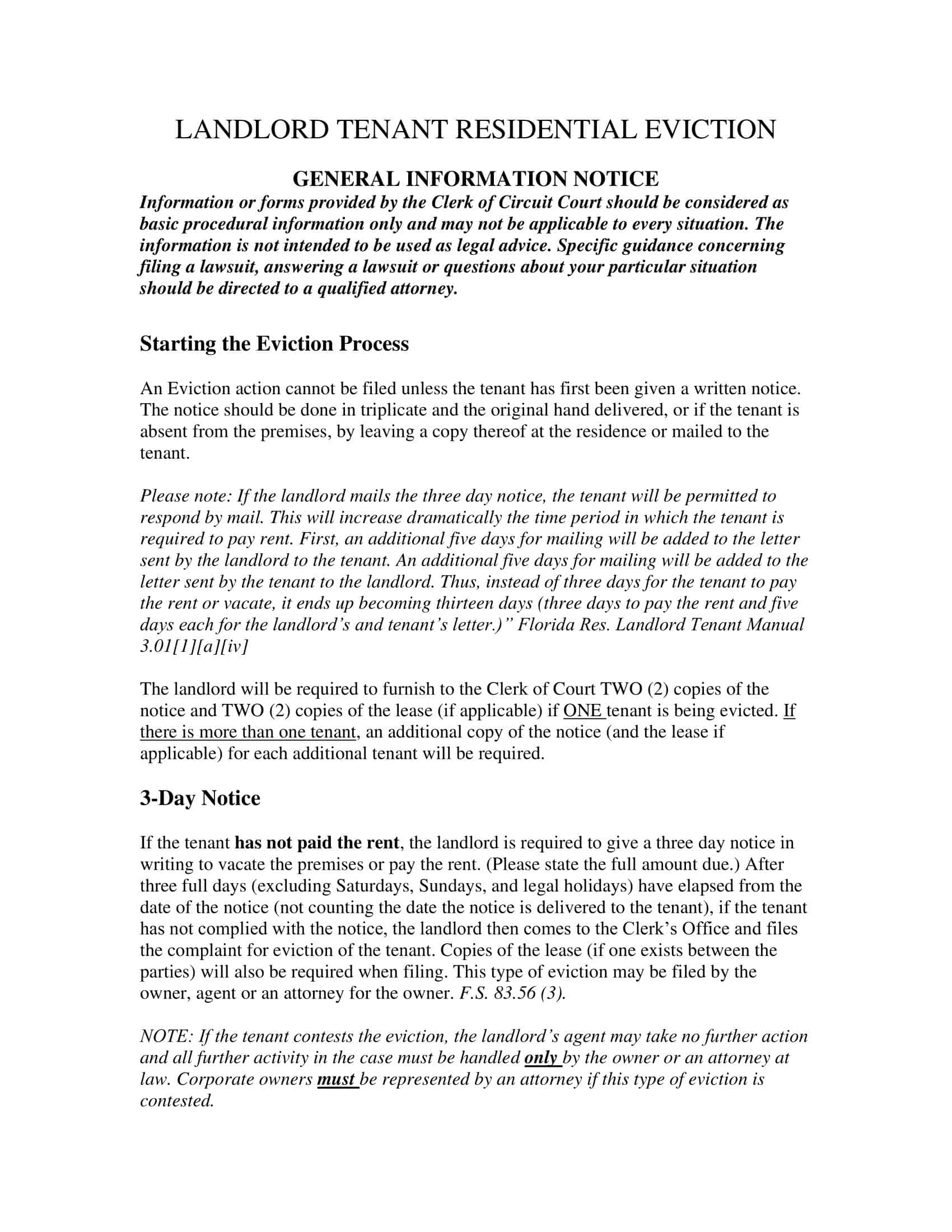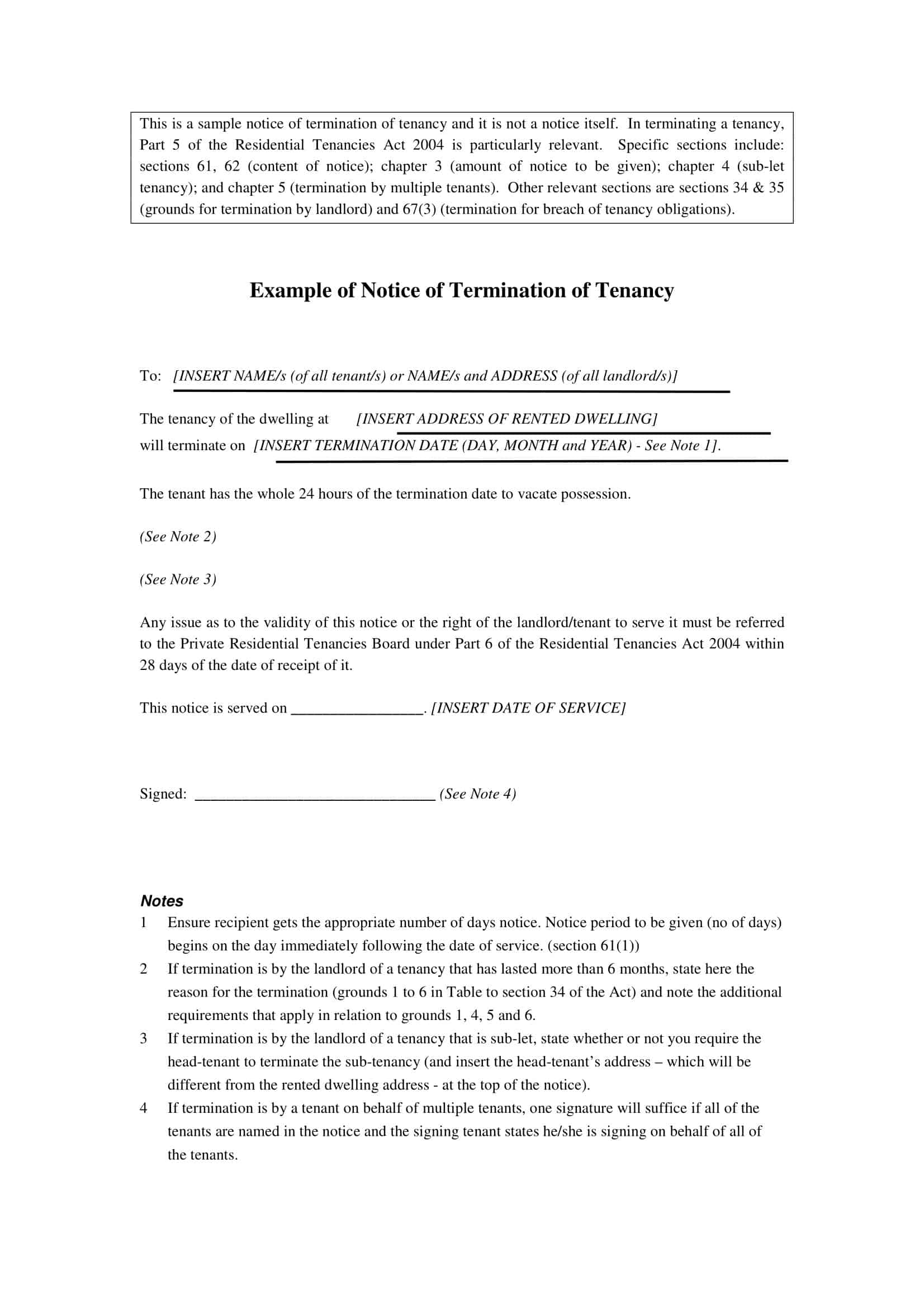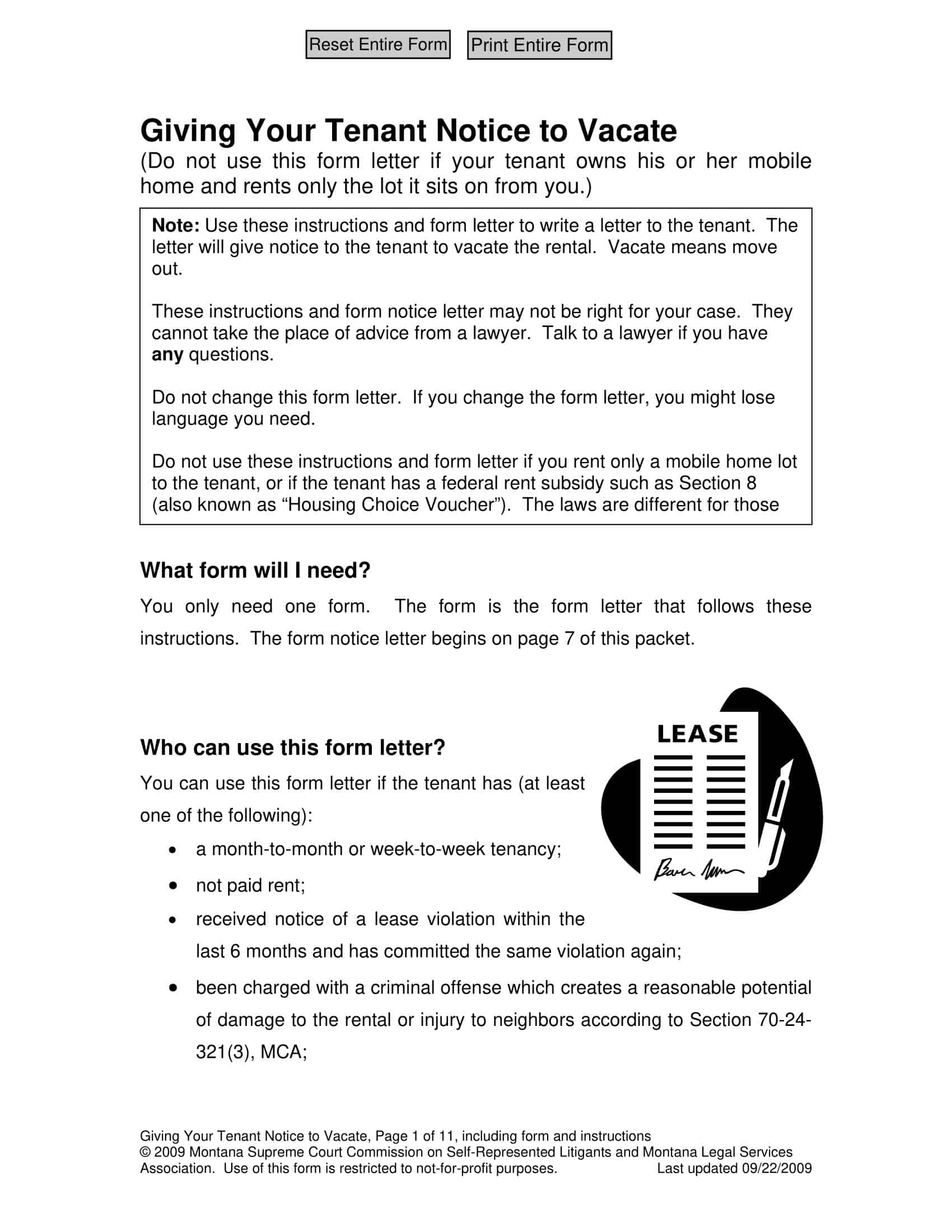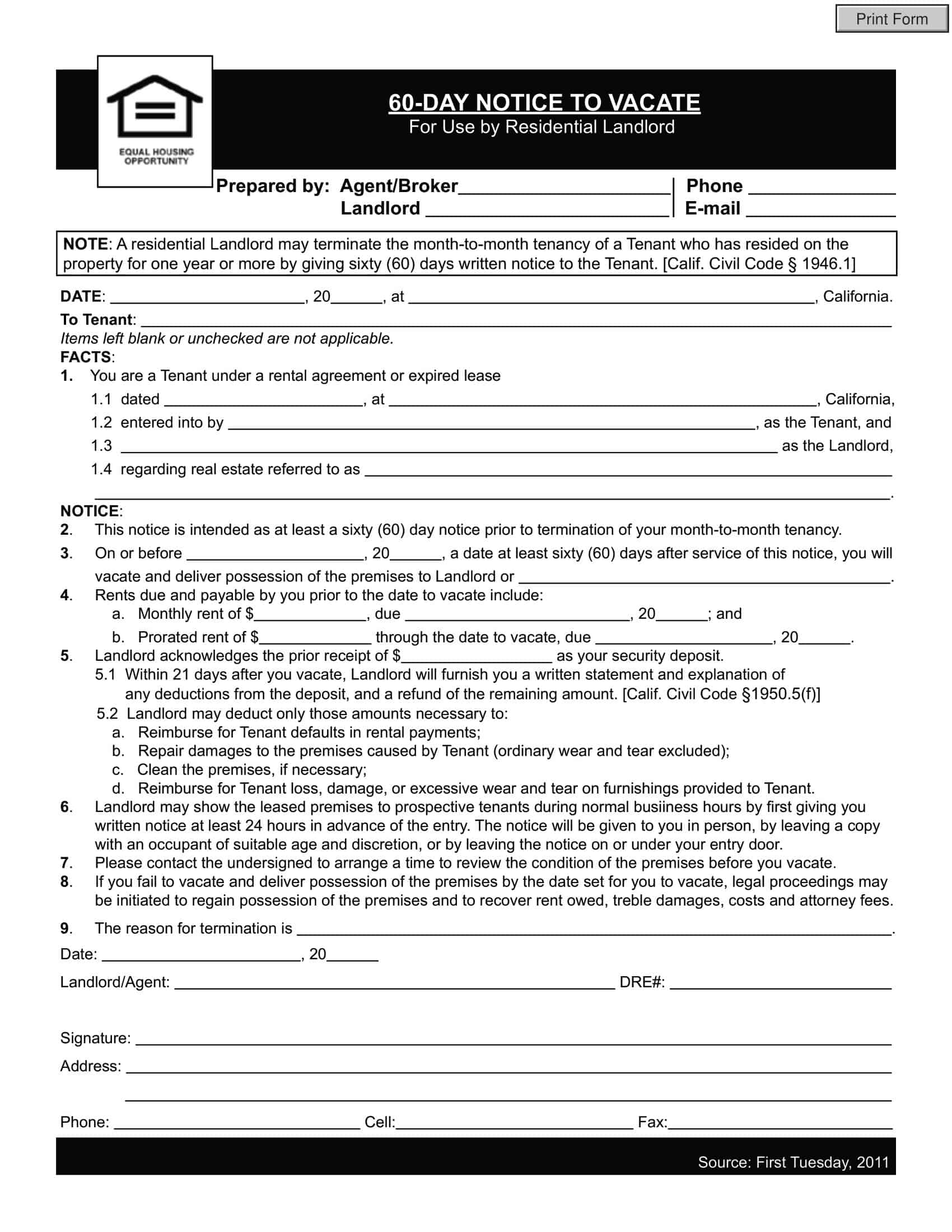An eviction notice is a formal document that is served to a tenant by a landlord or property owner to inform the tenant that they must vacate the property. Eviction notices are typically used when a tenant has violated the terms of their lease or rental agreement, or has failed to pay rent.
Receiving an eviction notice can be a stressful and intimidating experience, and it is important for tenants to understand their rights and options when facing eviction. In this article, we will provide an overview of the eviction process and what tenants can do if they receive an eviction notice.
Table of Contents
Eviction Notice Templates
Eviction Notice Templates are legally formatted documents used by landlords or property owners to notify tenants of their intention to terminate the tenancy agreement and initiate eviction proceedings. These templates provide a standardized format for communicating the eviction notice in a clear, concise, and legally compliant manner. Eviction Notice Templates serve as an important tool to assert the landlord’s rights and ensure proper documentation throughout the eviction process.
Eviction Notice Templates are critical in initiating the legal process of eviction and establishing a formal record of the notice served to the tenant. It is important to note that eviction laws and procedures vary by jurisdiction, and specific requirements may differ. Landlords and property owners should seek legal advice or consult local regulations to ensure the eviction notice aligns with the applicable laws in their area.
What does a typical eviction notice look like?

An eviction notice, also known as a notice to vacate or a notice to quit, typically includes the following information:
- The name and contact information of the landlord or property owner
- The name and contact information of the tenant
- The address of the property being rented
- The reason for the eviction, such as nonpayment of rent or violation of the lease or rental agreement
- The date by which the tenant must vacate the property
- Any applicable state or local laws that pertain to the eviction process
- The signature of the landlord or property owner or their representative
Eviction notices may also include other information depending on the laws of the state where the property is located. It is important for tenants to carefully review their eviction notice and seek legal advice if they have any questions or concerns.
In some cases, an eviction notice may also include a deadline for the tenant to correct the issue that led to the eviction notice, such as paying outstanding rent or correcting a lease violation. If the tenant is able to correct the issue within the specified time frame, the eviction process may be stopped. However, if the tenant is unable or unwilling to correct the issue, the landlord may proceed with the eviction process.
In most cases, an eviction notice will be delivered to the tenant in person or by mail. In some states, it may also be posted on the property or sent by fax or email. It is important for tenants to be aware of the specific requirements for serving an eviction notice in their state, as failure to follow the proper procedures may invalidate the notice.
If a tenant receives an eviction notice, it is important for them to take action as soon as possible. Depending on the circumstances, the tenant may be able to negotiate with the landlord or take legal action to challenge the eviction. It is also important for the tenant to begin making arrangements to vacate the property if they are unable to resolve the issue with the landlord. Seeking legal advice and assistance can be helpful in navigating the eviction process and protecting the tenant’s rights.
Types Of Eviction Notices
There are several different types of eviction notices that a landlord may use, depending on the specific circumstances and the laws of the state where the property is located. Some common types of eviction notices include:
Nonpayment of rent: This type of eviction notice is served to a tenant who has failed to pay their rent on time. It typically gives the tenant a specified amount of time to pay the outstanding rent or vacate the property.
Lease violation: This type of eviction notice is served to a tenant who has violated the terms of their lease or rental agreement. The notice may specify the specific violation and give the tenant a deadline to correct the issue or vacate the property.
No-cause: In some states, a landlord may be able to evict a tenant without providing a specific reason, as long as they follow the proper procedures and give the tenant the required notice. This type of eviction notice is known as a “no-cause” eviction.
Holdover: This type of eviction notice is served to a tenant who has stayed on the property after their lease or rental agreement has ended. The landlord may require the tenant to vacate the property or may offer the option to sign a new lease.
Unlawful detainer: This type of eviction notice is used in cases where the tenant is occupying the property without the landlord’s permission. It may be served to a tenant who has remained on the property after being served with a notice to vacate or to a squatter who is occupying the property without any legal right to do so.
It is important for tenants to be aware of the specific laws and procedures for eviction in their state and to carefully review any eviction notice they receive to understand their rights and options.
How to Write an Eviction Notice?
As a landlord or property owner, it may be necessary to serve an eviction notice to a tenant who has violated the terms of their lease or rental agreement or who has failed to pay rent. An eviction notice is a formal document that informs the tenant that they must vacate the property by a specific date.
It is important to follow the proper procedures for serving an eviction notice and to have a valid reason for the eviction in order to avoid any legal issues. Here is a step-by-step guide on how to write an eviction notice:
Determine the reason for the eviction
In order to serve an eviction notice, you must have a valid reason for the eviction. Common reasons for eviction include nonpayment of rent, lease violations, and the end of a lease or rental agreement. It is important to be able to document the reason for the eviction in case it is challenged in court.
Check the laws in your state
Eviction laws vary from state to state, and it is important to be aware of the specific requirements for serving an eviction notice in your state. Some states have strict requirements for the content and format of the notice, while others have more flexible guidelines. Be sure to familiarize yourself with the laws in your state to ensure that you are following the proper procedures.
Gather the necessary information
To write an eviction notice, you will need to include certain information, such as the names and contact information of both the landlord and the tenant, the address of the property, and the reason for the eviction. You will also need to include the date by which the tenant must vacate the property and any applicable state or local laws.
Format the notice
There are a few different ways that you can format an eviction notice, including using a standard form or creating your own document. If you are using a standard form, be sure to fill in all of the necessary information and double-check for accuracy. If you are creating your own document, consider including a header with the names and contact information of the landlord and tenant and a clear subject line, such as “Eviction Notice” or “Notice to Vacate.”
Include a statement of the reason for the eviction
Be sure to clearly state the reason for the eviction in the notice, such as nonpayment of rent or violation of the lease or rental agreement. If the eviction is due to nonpayment of rent, be sure to include the amount of rent that is owed and the date on which it was due.
Specify the date by which the tenant must vacate the property
It is important to include a specific date by which the tenant must vacate the property. This date should be in compliance with the laws of your state and should allow the tenant a reasonable amount of time to find a new place to live.
Include any applicable state or local laws
Be sure to include any applicable state or local laws that pertain to the eviction process. This may include the required notice period for the eviction or any rights that the tenant has during the eviction process.
Sign and date the notice
Be sure to sign and date the notice, and include your contact information. It is important to keep a copy of the notice for your records.
Serve the notice to the tenant
There are several ways to serve an eviction notice, including delivering it in person, mailing it to the tenant’s address, or posting it on the property. Be sure to follow the proper procedures for serving the notice in your state.
Consider seeking legal advice
If you are unsure about how to proceed with the eviction or if you encounter any challenges during the process, it may be helpful to seek legal advice. An attorney can provide guidance on the eviction process and help you to navigate any legal issues that may arise.
It is important to remember that the eviction process can be stressful and emotionally charged for both landlords and tenants. It is important to be respectful and professional throughout the process and to be open to negotiation or compromise if possible.
In some cases, a mutually beneficial solution can be reached without the need for eviction. However, if the tenant does not vacate the property by the specified date, you may need to seek legal action to have them removed.
Here are a few additional tips for writing an eviction notice:
- Be clear and concise. Use simple language and avoid using legal jargon.
- Use a formal tone. An eviction notice is a formal document, so be sure to use a professional and respectful tone.
- Double-check for accuracy. Be sure to carefully review the notice for accuracy before serving it to the tenant.
- Keep a copy for your records. It is important to keep a copy of the eviction notice for your records in case it is needed as evidence in court.
- Follow the proper procedures. Be sure to follow the proper procedures for serving the eviction notice in your state to avoid any legal issues.
How to Avoid an Eviction
There are several things you can do to try to avoid being evicted:
Pay your rent on time: Make sure you pay your rent on time every month. If you are having trouble paying your rent, try to communicate with your landlord as soon as possible.
Follow the terms of your lease: Make sure you follow the terms of your lease, such as not causing damage to the property or disturbing your neighbors.
Negotiate with your landlord: If you are having trouble paying your rent, try to negotiate with your landlord to come up with a payment plan or to temporarily reduce your rent.
Get legal assistance: If you are facing eviction, you may want to consider seeking legal assistance. A lawyer or legal aid organization may be able to help you negotiate with your landlord or represent you in court.
Consider alternative housing options: If you are unable to resolve your issues with your landlord and are facing eviction, you may want to consider finding alternative housing options. This could include moving in with family or friends or finding a new rental property.
FAQs
An eviction notice is a written document that a landlord serves to a tenant to inform them that they must vacate the rental property. Here are some common questions and answers about eviction notices:
What is the purpose of an eviction notice?
The purpose of an eviction notice is to inform the tenant that they are in violation of the terms of their lease agreement and must either correct the problem (such as paying past-due rent) or vacate the property.
Can a landlord evict a tenant without an eviction notice?
No, a landlord cannot evict a tenant without first serving an eviction notice. The specific requirements for serving an eviction notice vary by state, so it is important for landlords to follow the laws in their state.
Can a tenant fight an eviction notice?
Yes, a tenant can fight an eviction notice by appearing in court and presenting their case to a judge. The tenant may have a valid defense to the eviction, such as the landlord failing to make necessary repairs to the property or evicting the tenant for discriminatory reasons. The tenant may also be able to negotiate a resolution with the landlord, such as agreeing to pay past-due rent in exchange for the landlord dropping the eviction case.
Can a tenant be evicted during the winter?
In some states, landlords are prohibited from evicting tenants during the winter months (usually November through March) due to the potentially harsh weather conditions. This is known as a “winter eviction moratorium.” However, not all states have such a moratorium in place, so it is important for tenants to be aware of the laws in their state.
Can a landlord change the locks or shut off utilities to force a tenant to vacate the property?
No, a landlord cannot change the locks or shut off utilities to force a tenant to vacate the property. This is considered “self-help” eviction, which is illegal in most states. The landlord must follow the legal process for eviction, which includes serving an eviction notice and obtaining a court order if necessary.
Can a tenant be evicted for no reason?
In most states, a landlord can only evict a tenant for a valid reason, such as nonpayment of rent or a lease violation. However, some states have “at-will” tenancy laws, which allow a landlord to evict a tenant without a specific reason, as long as the landlord follows the proper legal process.
Can a tenant be evicted for complaining about the condition of the rental property?
No, a tenant cannot be evicted for complaining about the condition of the rental property. This is known as “retaliation eviction,” and it is illegal in most states. If the landlord tries to evict the tenant for complaining about the property, the tenant may have a defense to the eviction.
Can a tenant be evicted for having a guest stay over?
It depends on the terms of the lease agreement. Some lease agreements may have specific provisions regarding overnight guests, while others may be more flexible. If the tenant is in violation of the lease agreement by having a guest stay over, the landlord may have grounds for an eviction. However, the landlord must still follow the proper legal process for eviction, which includes serving an eviction notice and obtaining a court order if necessary.
Can a tenant be evicted for hosting a party?
It depends on the circumstances. If the tenant is hosting a loud or disruptive party that disturbs the peace of the neighborhood or damages the property, the landlord may have grounds for an eviction. However, the landlord must still follow the proper legal process for eviction, which includes serving an eviction notice and obtaining a court order if necessary.
How is an eviction notice served?
An eviction notice must be served to the tenant in a legally prescribed manner, which may vary by state. Some common ways to serve an eviction notice include:
- Hand-delivering the notice to the tenant
- Posting the notice on the tenant’s door
- Sending the notice by certified mail, with a return receipt requested
How long does an eviction process take?
The length of the eviction process can vary depending on the circumstances and the laws of the state where the property is located. However, the process typically involves the following steps:
- The landlord serves the eviction notice to the tenant
- If the tenant does not correct the problem or vacate the property within the specified time frame, the landlord can file an eviction lawsuit (also known as an “unlawful detainer” action) in court
- The court will schedule a hearing, at which the tenant can present their defense to the eviction
If the judge rules in favor of the landlord, they will issue a judgment of eviction and a writ of possession, which orders the tenant to vacate the property
If the tenant does not vacate the property, the landlord can request that the sheriff or marshal physically remove the tenant and their belongings from the property.
















































![%100 Free Hoodie Templates [Printable] +PDF 1 Hoodie Template](https://www.typecalendar.com/wp-content/uploads/2023/05/Hoodie-Template-1-150x150.jpg)
![Free Printable Food Diary Templates [Word, Excel, PDF] 2 Food Diary](https://www.typecalendar.com/wp-content/uploads/2023/05/Food-Diary-1-150x150.jpg 150w, https://www.typecalendar.com/wp-content/uploads/2023/05/Food-Diary-1-1200x1200.jpg 1200w)
![Free Printable Roommate Agreement Templates [Word, PDF] 3 Roommate Agreement](https://www.typecalendar.com/wp-content/uploads/2023/06/Roommate-Agreement-150x150.jpg)
